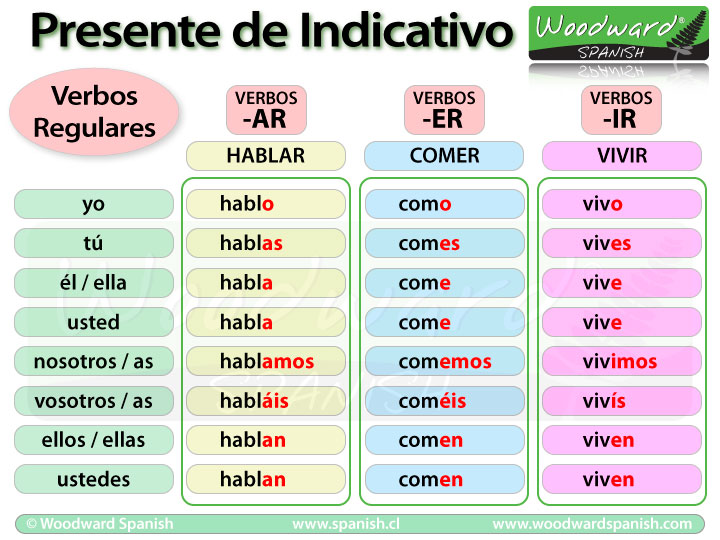
Last week my inquiry focus was on masculine and feminine words in Spanish. But, Spanish is much more complex than just that. With any language, it is important to know different verbs and how to properly conjugate them. Therefore, I will be learning the Spanish present tense (presente indicativo) with regular verbs
The three verb endings in Spanish are -ar, -er, and -ir. Any verb in Spanish that can be translated will have one of these endings. I used this helpful website to teach myself how to properly translate regular Spanish verbs The present simple tense | Learning Spanish Grammar | Collins Education (collinsdictionary.com).
Regular -ar verbs:
yo: o ; tú: as ; él/ella/ustede: a ; nosotros: amos ; ellos/ellas/ustedes: an
Examples:
- Yo hablo español (I speak Spanish)
- Ella baila todos los dias (She dances everyday)
Regular -er verbs:
yo: o ; tú: es ; él/ella/ustede: e ; nosotros: emos ; ellos/ellas/ustedes: en
Examples:
- Yo como pan (I eat bread)
- Ellos corren rápido (They run fast)
Regular -ir verbs:
yo: o ; tú: es ; él/ella/ustede: e ; nosotros: imos ; ellos/ellas/ustedes: en
Examples:
- Nosotros vivimos en victoria (We live in Victoria)
- Ella escribe los libros (She writes books)
This image below displays the regular -ar, -er, and -ir verb endings side by side. I find this image to be very helpful as it shows the trends between the different endings. They all follow a similar pattern, only the -a, -e, and -i are different.

Now that we know the regular verb endings in the present tense, what are the steps for how to conjugate a verb? The brief video provides clear steps on how to conjugate a verb. You begin with the regular verb, keep the root, remove the ending (-ar, -er, -ir), then add the conjugated ending.
Since we know understand how to translate verbs in the present tense, try a practice quiz! I find that practice quizzes are a valuable method of self assessment for checking my own understanding of a certain topic. Here is a good practice quiz that I completed Spanish Present Tense Forms Practice Quiz | SpanishDict.
This week really helped develop my inquiry process of learning Spanish. Verbs are the basis of any language. Once you deeply understand the present tense, you can begin learning more complex verb structures.
Adiós,
Kyra

Leave a Reply
You must be logged in to post a comment.